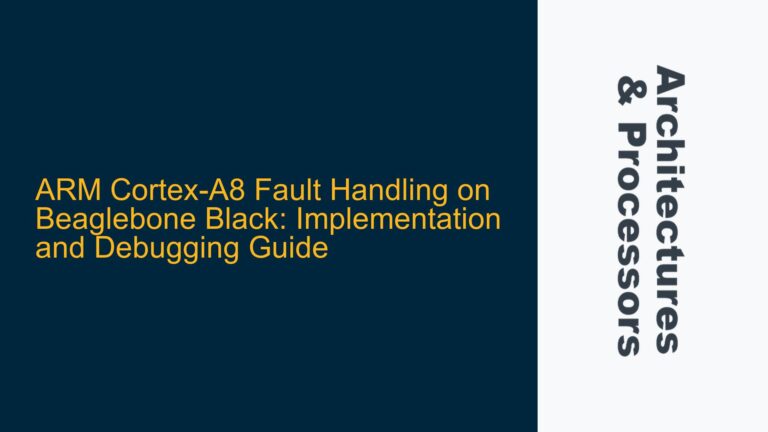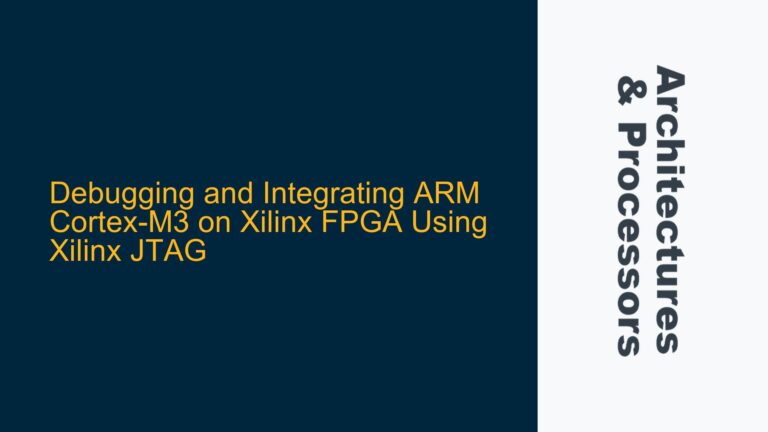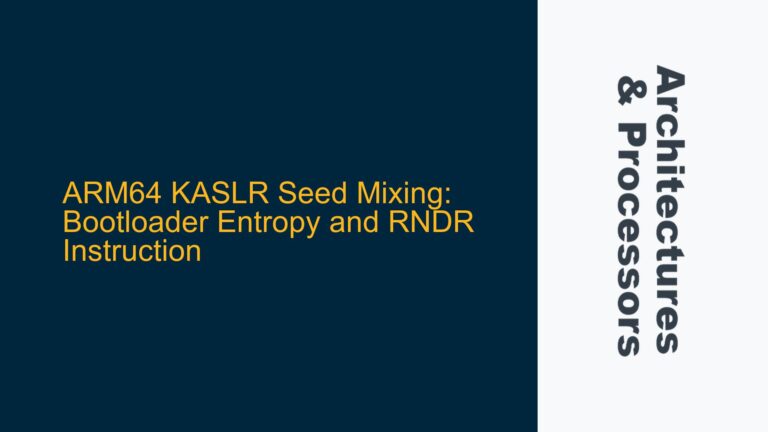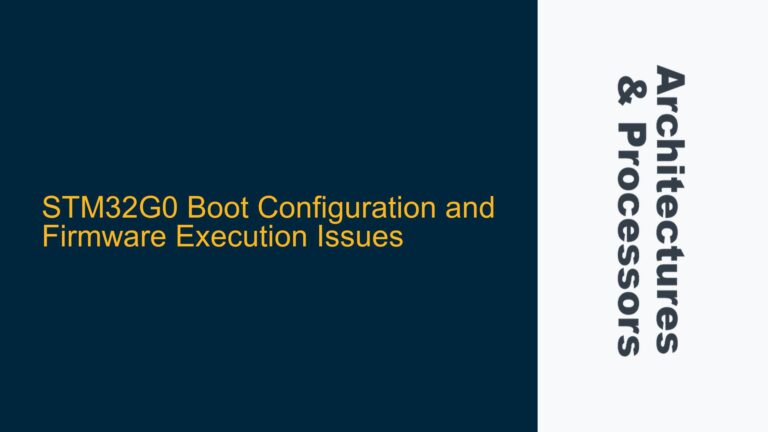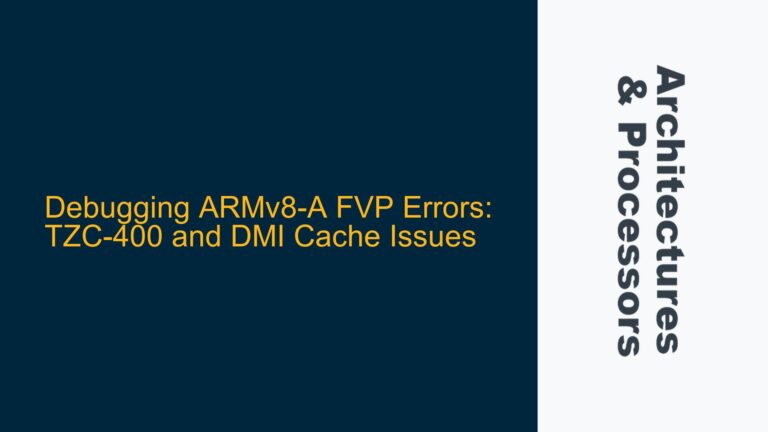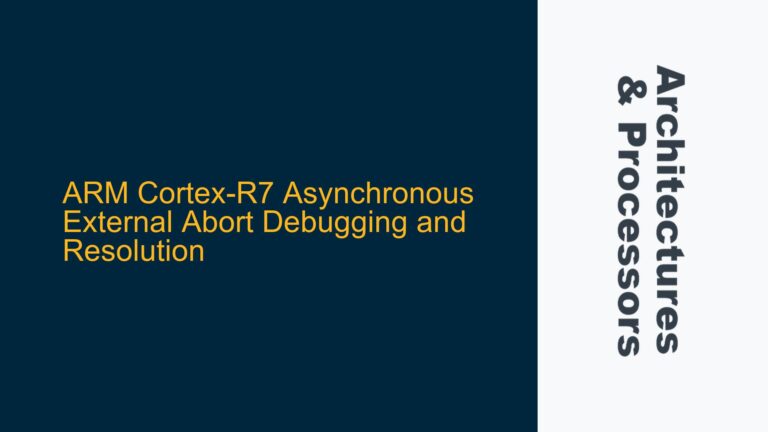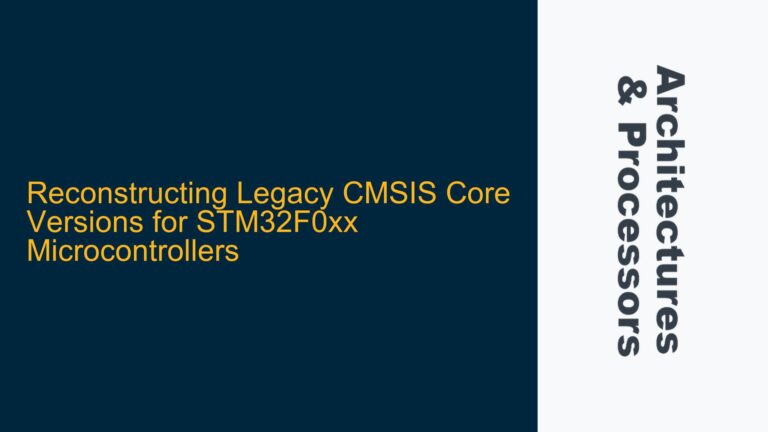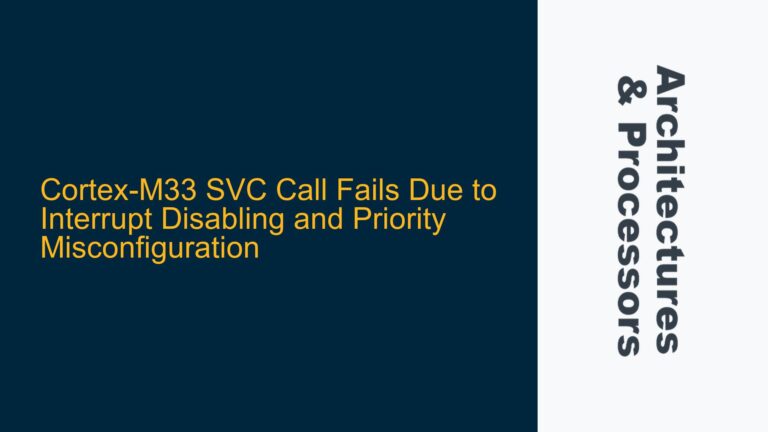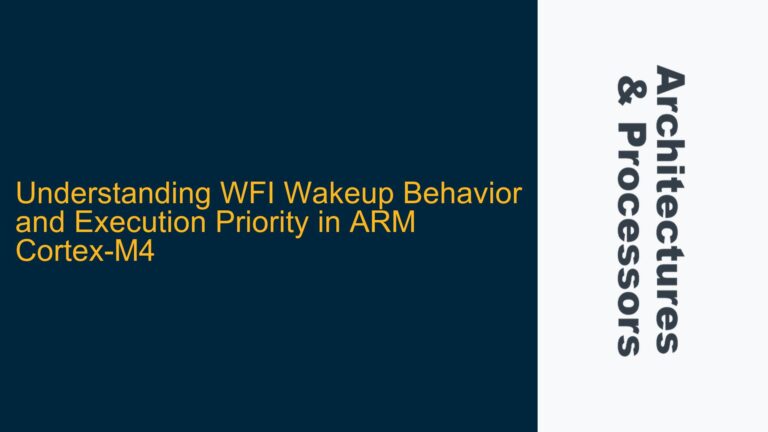ARM Cortex-A8 Fault Handling on Beaglebone Black: Implementation and Debugging Guide
ARM Cortex-A8 Fault Handling Mechanisms and Challenges The ARM Cortex-A8 processor, used in the Beaglebone Black, is a high-performance embedded processor designed for complex applications. Unlike the Cortex-M series, which is optimized for microcontroller applications, the Cortex-A8 is part of the Cortex-A family, targeting applications requiring full-fledged operating systems like Linux. This distinction is crucial…
